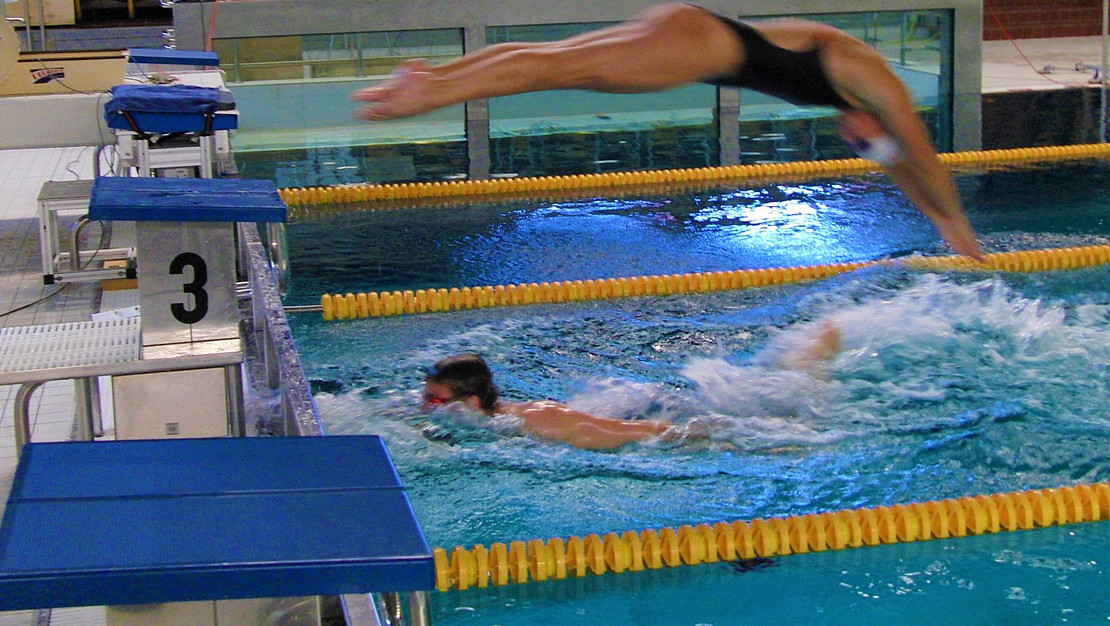This page contains automatically translated content.
Who swims faster in the relay - and who does not
 Image: Dr. Sebastian Fischer.
Image: Dr. Sebastian Fischer.The study, conducted by the Institute of Sport and Sport Science at the University of Kassel, examined performances of male and female swimmers in 4x100-meter freestyle races at the Olympic Games and World Championships over the past 20 years in comparison to their respective individual performances in the 100m of the same swimming event. "Our results confirm previous research findings that swimmers perceive their performance for the relay team as indispensable and that this spurs them on to greater efforts," says study leader Dr. Claudia Braun from the Department of Training and Exercise (headed by Prof. Dr. Armin Kibele).
But the Kassel-based sports scientists were able to determine this effect more precisely with the help of their statistical analysis: According to the results, the swimmers in positions two to four were all on average about 0.26 seconds faster than in their individual races. Men increased their performance by 0.6 percentage points and women by 0.4 percentage points. This increase in performance was achieved in roughly equal proportions in both the first leg (0-50m) and the second leg (50-100m). This result underscores the assumption that the faster swim times were indeed also due to increased effort and not - as other researchers have assumed - a mere relay start benefit.
At start position one, on the other hand, performance remained the same. The sports scientists suggest two possible explanations: Either social indispensability was lower at position one than at the other positions because teammates at subsequent positions were more likely to compensate for a possible weaker performance. Or different starting techniques from position one and two to four were the cause. The assumption that the last athlete feels the highest social indispensability and exerts the most effort cannot be confirmed in a statistically significant way by the available data. In addition, the swimmers' performance gains were dependent on their own team's current ranking in the current meet. They were particularly large if the relay team had a high chance of winning a medal at the changeover. This was especially true for female swimmers.
"Since our results provide evidence that men and women react differently to social influences in relay swimming, we can even make recommendations regarding the starting order in competitions," concludes Dr. Braun. It could be particularly advantageous for women's relays if high-performing swimmers start in position one or two. The resulting good starting position for a medal could motivate the rear starters even more and spur them on to greater performances. In men's relays, on the other hand, the opposite order is recommended: "It would be wasted potential to have the strongest male swimmer start at the front. This is because swimmers in position one did not show any increase in performance compared to their individual performance, while in all other positions they achieved performance gains of comparable magnitude and largely independent of the current race events," explains Dr. Braun.
Contact:
Dr. Claudia Braun
University of Kassel
Institute for Sport and Sport Science
Phone +49 561 804-5235
E-mail cbraun[at]uni-kassel[dot]de
Press contact:
Sebastian Mense
University of Kassel
Communications, Press and Public Relations
Phone: +49 561 804-1961
E-mail: presse[at]uni-kassel[dot]de
www.uni-kassel.de